Discover the world’s weirdest delicacies — from maggot cheese and fermented shark to bull testicles and live octopus. Which would you dare to try?
One Person’s Nightmare, Another’s Treat
What if your next travel meal included fermented shark, maggot-infested cheese, or an egg with a partially developed bird inside? Sound unthinkable? For millions around the world, these foods are not only accepted – they are delicacies, cherished for generations. Welcome to the world of bizarre bites that challenge your palate and redefine what “delicious” means.
These dishes might seem outrageous to some, but to others, they’re traditional, meaningful, and mouthwateringly good. This isn’t about mocking food culture. It’s about understanding how complex, diverse, and deeply human our relationship with food can be.
1. Balut – Philippines
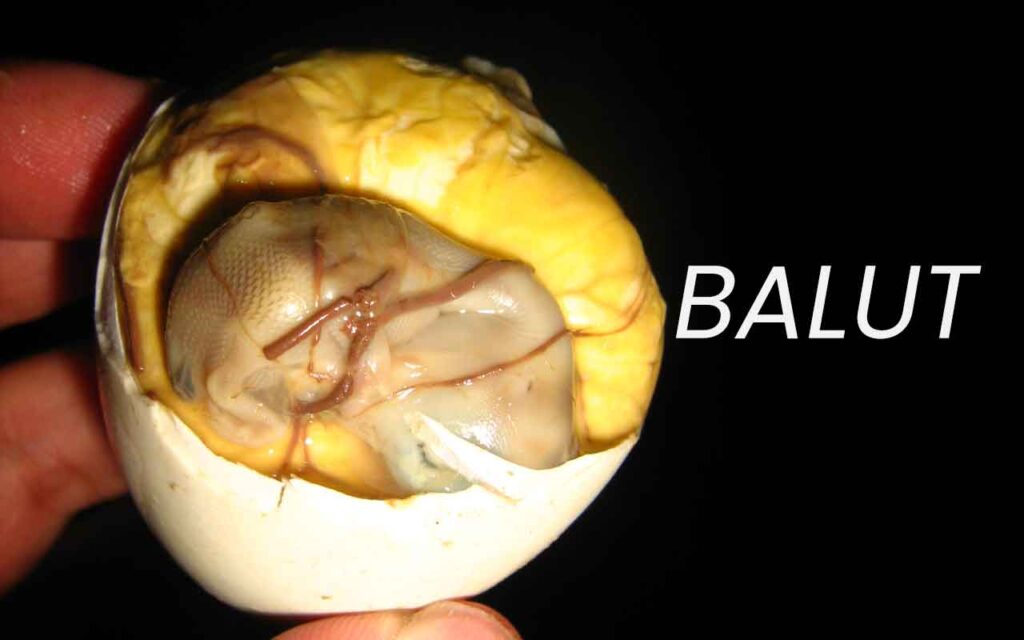
Would you eat a duck egg with a beak inside?
Balut is perhaps one of the most misunderstood foods in the world. It’s a fertilized duck egg, usually 14 to 21 days into development, with the partially formed embryo still inside. Eaten warm with salt, vinegar, or chili, balut is considered a powerful source of protein and a late-night street snack in the Philippines.
To outsiders, the sight of feathers, beak, or bones might be horrifying. But for many Filipinos, it’s a comfort food steeped in tradition and masculine bravado. Eating balut isn’t just about taste – it’s a rite of passage. It’s sold at sports events, beaches, and neighborhood corners.
Interesting fact: There are superstitions around balut – it’s believed to increase stamina and sexual virility. It’s often consumed before competitions or long workdays.
Scientifically, balut offers a complete package: egg white for protein, yolk for fats, and the developing chick for collagen and micronutrients. It’s also been studied for its potential aphrodisiac properties.
2. Casu Marzu – Italy
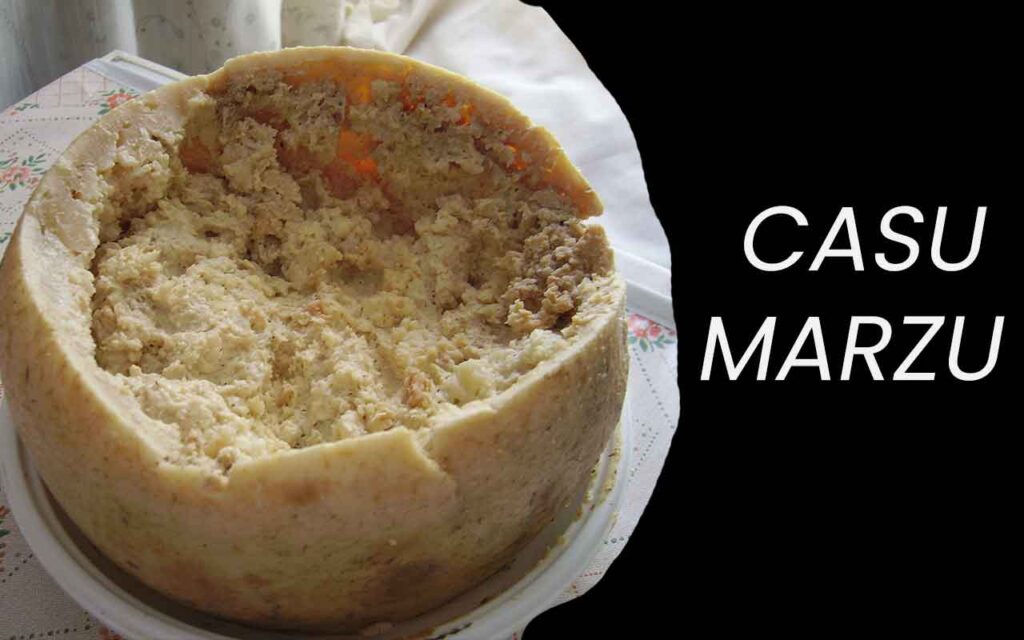
Would you eat cheese filled with live maggots?
This Sardinian sheep’s milk cheese is banned in many places for good reason. Casu Marzu literally translates to “rotten cheese.” It contains live maggots – deliberately left to ferment the cheese past normal ripening.
As the maggots digest the fats, they soften the cheese to a spreadable texture. The result is pungent, creamy, and biologically alive. Locals often eat it with traditional flatbread, savoring its intense flavor.
Interesting fact: True Casu Marzu fans say the maggots must be alive when eaten – if they’re dead, the cheese is considered unsafe. Some wear protective eyewear because the maggots can jump!
Due to health concerns (live larvae can survive digestion), it’s illegal under EU hygiene regulations. But underground cheese-makers and connoisseurs continue to risk it for the experience. Some say it’s the ultimate test of culinary bravery.
3. Hákarl – Iceland

Would you eat a shark that smells like window cleaner?
What smells like ammonia, tastes like death, but is loved by a nation? Hákarl – fermented Greenland shark.
Sharks in this region are toxic when fresh due to high urea levels. So Icelanders developed a method to make them edible: bury the shark for weeks, then hang it to dry for months. The result is a chewy, translucent cube with a strong ammonia smell.
To Icelanders, it’s a proud tradition, often eaten during the midwinter festival Þórablót. Served with a shot of Brennivín (a potent local spirit), it’s not just a food – it’s cultural heritage.
Interesting fact: Icelandic legend claims this method came from Viking sailors who needed protein sources that wouldn’t spoil. Hákarl became a survival necessity – now, it’s a symbol of resilience.
Anthony Bourdain famously said it was the worst thing he’d ever eaten. Yet for many, it’s an acquired taste rooted in survival history.
4. Surströmming – Sweden
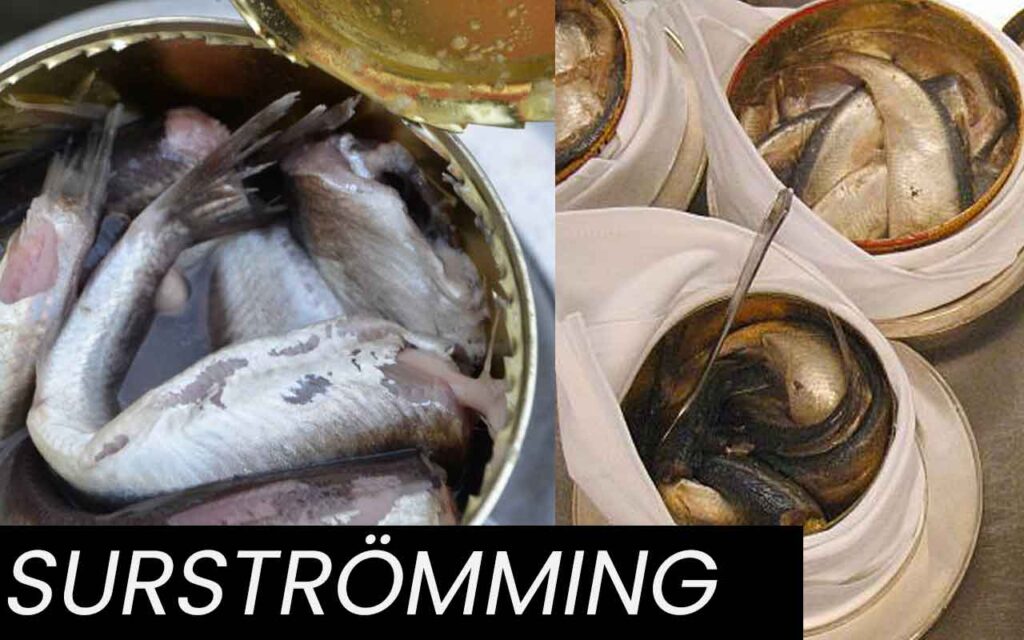
Would you crack open a can that could clear a room?
This Swedish delicacy is banned from many flights for a reason: it stinks. Surströmming is Baltic herring fermented in a sealed tin until it nearly bursts. When opened, the smell is so intense that even locals often eat it outdoors.
Traditionally eaten with thin bread, onions, and potatoes, it’s salty, sour, and deeply fermented. Fans say the key is to combine it with the right flavors and embrace the aroma.
Interesting fact: There’s an annual Surströmming Festival in Sweden, where fans gather to feast. Some say the more the can bulges, the better the flavor.
Interestingly, the fermentation continues in the can, often causing it to bulge. Some say the best surströmming is months past the sell-by date. As one Swedish blogger puts it: “You don’t eat it. You surrender to it.”
5. Witchetty Grubs – Australia

Could you bite into a wriggling, creamy grub?
Aboriginal Australians have long eaten witchetty grubs – large, white wood-eating larvae found in tree roots. High in protein and fat, they can be eaten raw (with a flavor like almonds) or roasted (which gives them a crispy skin and a soft, gooey center).
They’re considered a bush delicacy and an important survival food. Insect protein is gaining popularity worldwide as a sustainable alternative, but for Indigenous communities, it’s about connection to land, tradition, and sustainability.
Interesting fact: Witchetty grubs were traditionally harvested by women using digging sticks – showcasing their role in food gathering and ecological knowledge.
Would you eat a wriggling grub for dinner? In parts of the Outback, that’s just Tuesday.
Also Read
06. Chitlins (Chitterlings) – USA
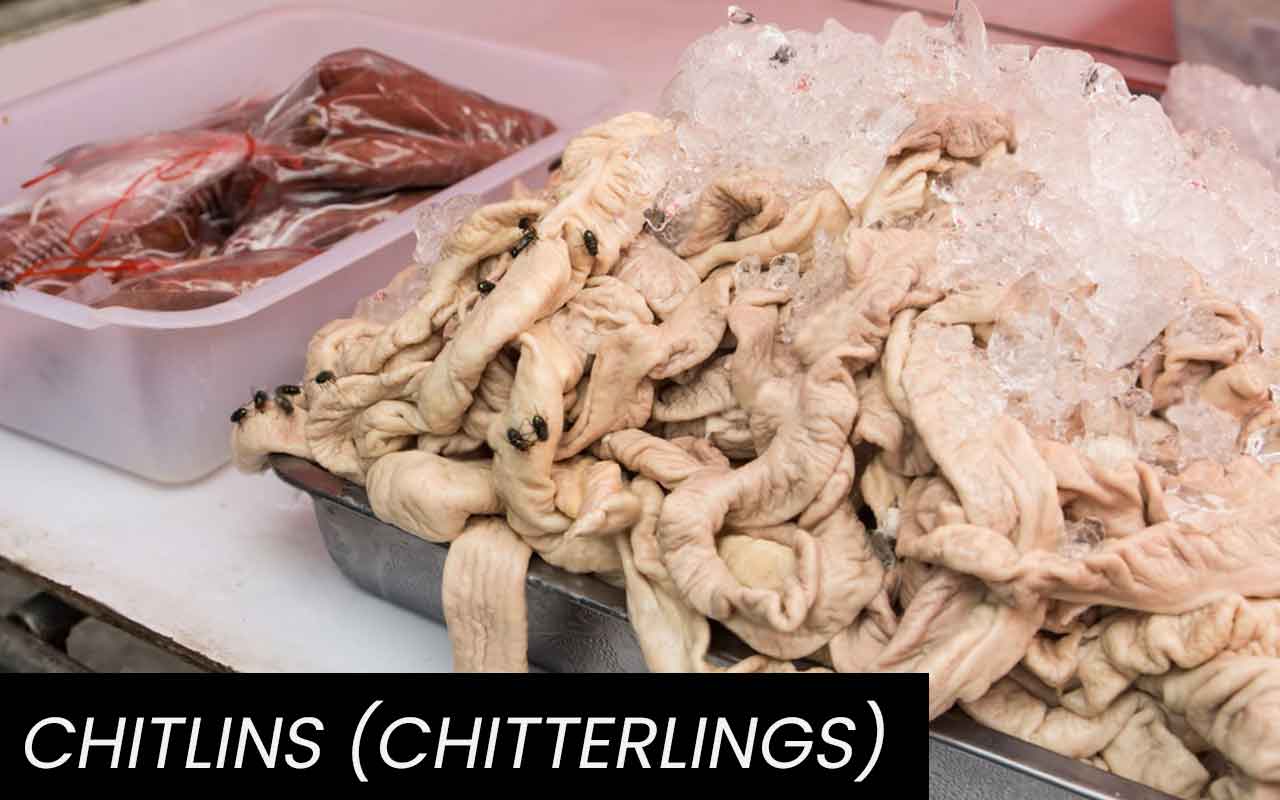
Would you eat stewed pig intestines during the holidays?
A staple in Southern soul food, chitlins are cleaned, boiled, and often slow-cooked with vinegar, onions, and spices. The result? A savory, slightly funky dish with a rich texture. Served during Thanksgiving or New Year’s, chitlins are more than food – they’re heritage.
Interesting fact: Chitlins were a symbol of survival during slavery and remain a controversial but respected part of Black American culinary history.
7. San-nakji – South Korea
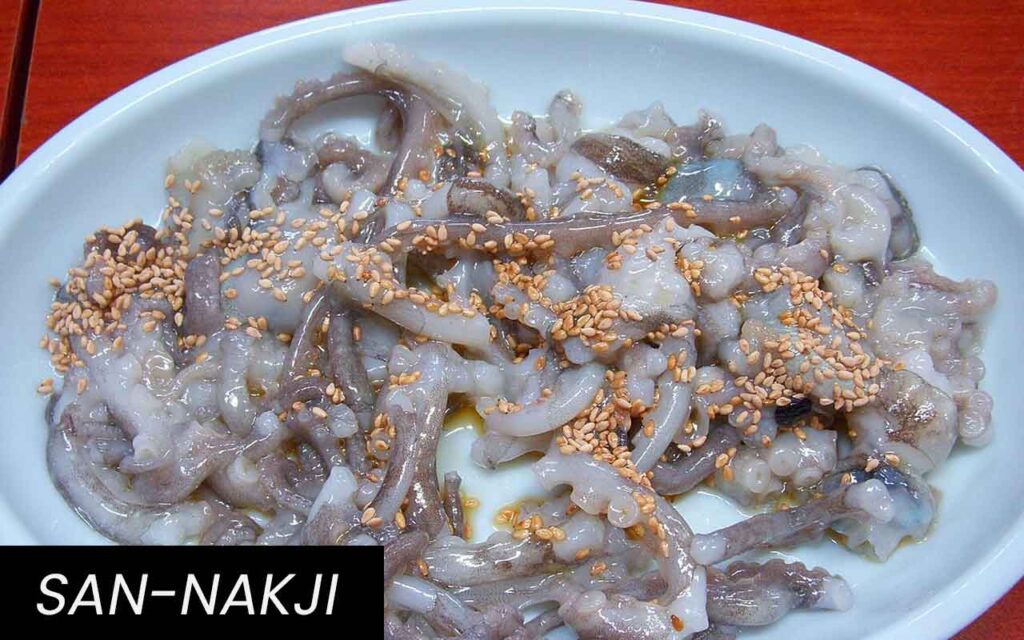
Would you eat something that’s still moving?
Sannakji is a dish made from freshly killed octopus, often served with sesame oil and seeds. The catch? The tentacles still move.
Thanks to residual nerve activity, the pieces squirm on the plate. It’s a popular bar snack in Korea, valued for its freshness and chewy texture. However, diners must chew thoroughly – suction cups can stick to the throat, posing a choking hazard.
Interesting fact: Some chefs massage the tentacles post-cutting to make them “dance” more actively on the plate – a performance and meal in one.
For thrill-seekers, sannakji offers the ultimate “living food” experience. For others, it challenges ethical lines between freshness and cruelty.
8. Rocky Mountain Oysters – United States
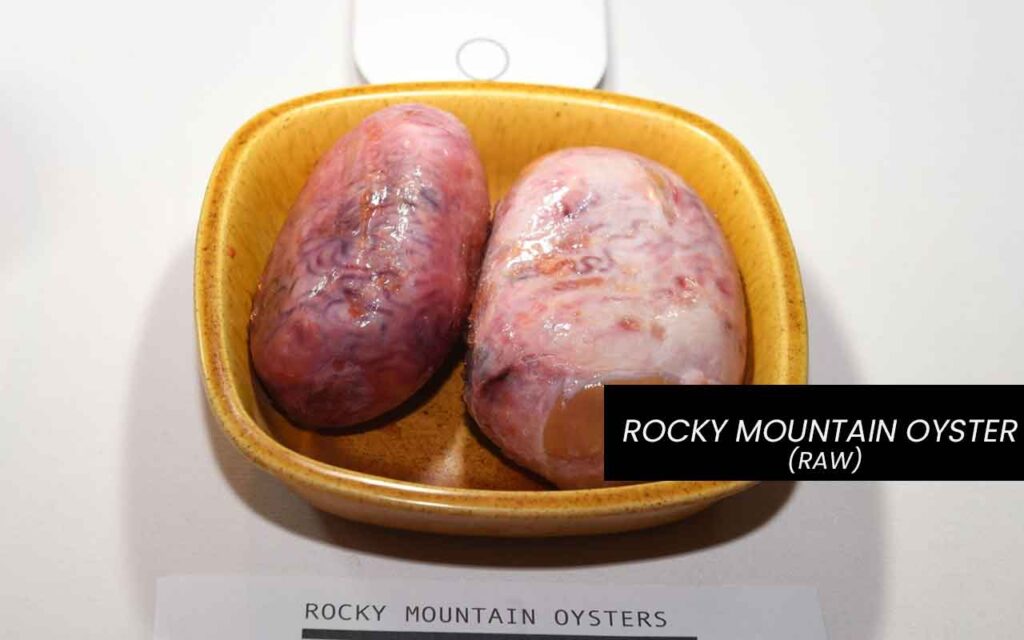
Would you eat bull testicles fried like chicken nuggets?
In the American West, Rocky Mountain Oysters are a beloved, if shocking, delicacy. Despite the name, they’re not seafood – they’re deep-fried bull testicles. Often served with cocktail sauce or hot sauce, they’re chewy, rich, and have a beefy flavor.
Interesting fact: These “oysters” are a staple at rodeos and ranch festivals in states like Colorado and Montana. Some claim they were invented out of necessity – cowboys wasting nothing on the frontier.
9. Pickled Pig’s Feet – Southern USA
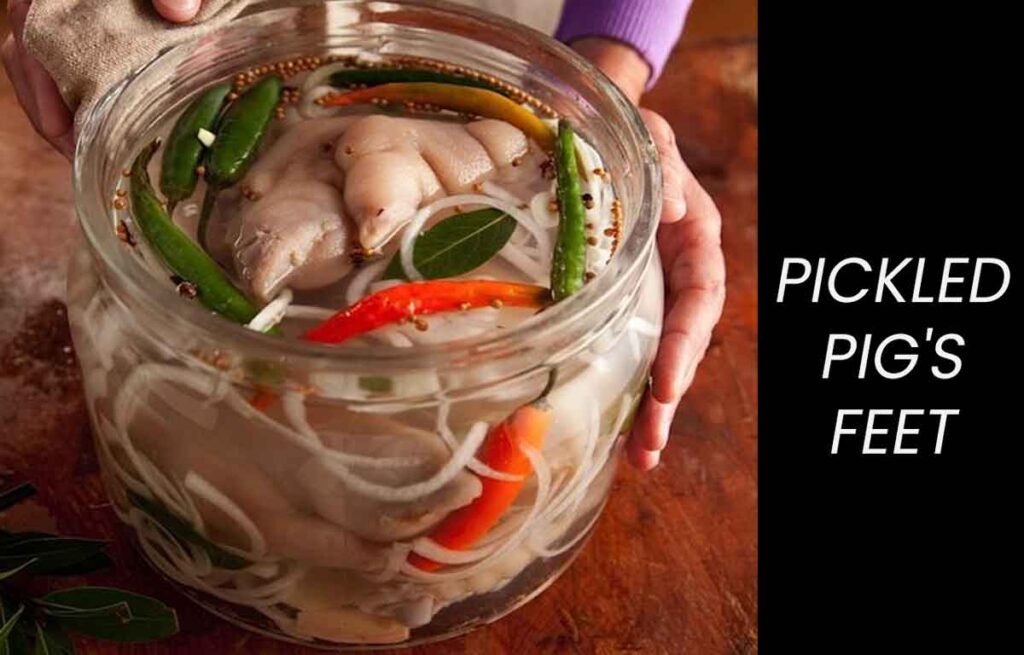
Would you snack on a vinegar-soaked pig’s foot?
Popular in Southern convenience stores and old-school diners, pickled pig’s feet are tangy, gelatinous, and packed with collagen. Eaten cold and straight from the jar, they’re considered a throwback snack with deep roots in Southern cooking.
Interesting fact: This dish originated from the African American culinary tradition of using every part of the animal, turning low-cost scraps into flavorful meals.
10. Century Egg – China
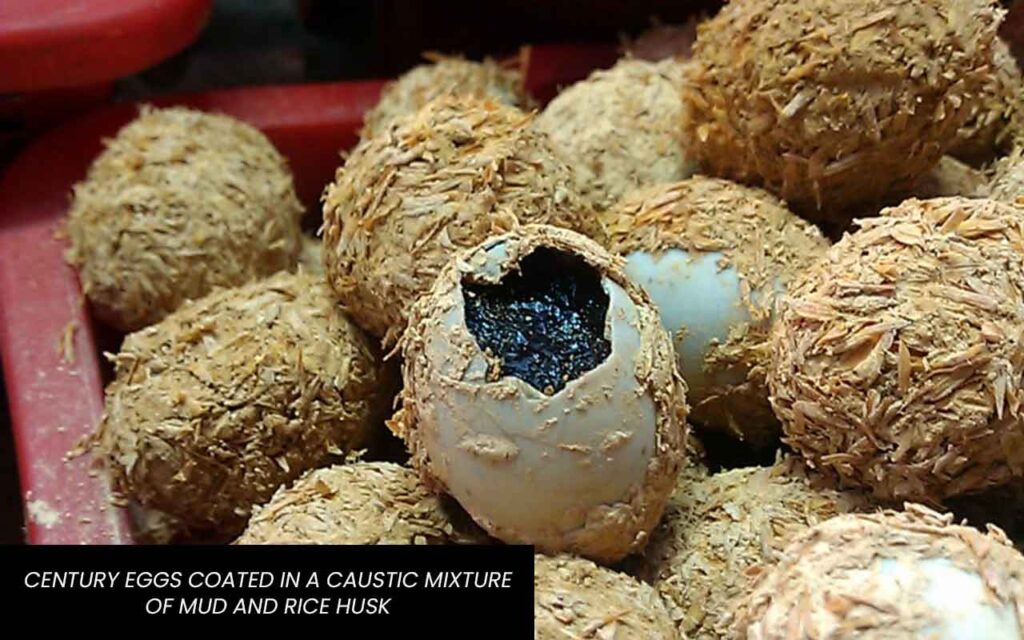
Would you eat a black egg that smells like sulfur?
Despite the name, century eggs aren’t 100 years old – they’re preserved for weeks to months in a mix of clay, ash, and lime. The result is a dark green yolk with a jelly-like black “white” and a powerful, sulfury flavor.
Loved in congee or sliced over tofu, century eggs are a staple in many Chinese households. The preservation method dates back centuries and is celebrated for transforming a simple egg into a bold delicacy.
Interesting fact: The practice started as a preservation technique during times of war and famine – now it’s considered a rich umami-packed ingredient.
Westerners often recoil at the look or smell. But in Chinese cuisine, it’s a prized ingredient, celebrated for umami depth and cultural nostalgia.
Would You Try Them?
Taste is cultural. What’s considered gross in one country might be gourmet in another. These delicacies challenge the way we think about food, fear, and familiarity.
Trying them might not only expand your palate – it could expand your understanding of humanity.
So the next time someone offers you fermented fish or a black egg, ask yourself: is it really weird, or just unfamiliar?
